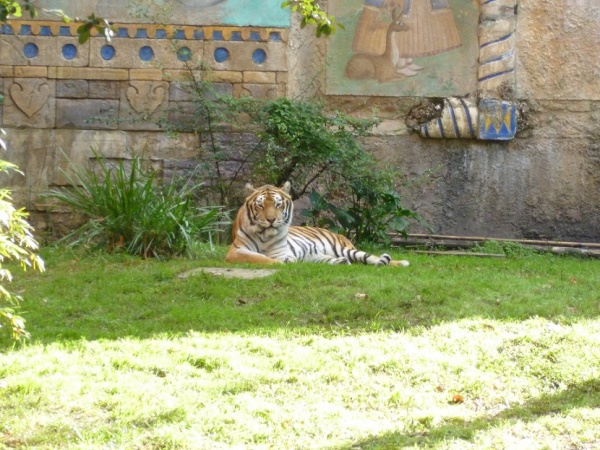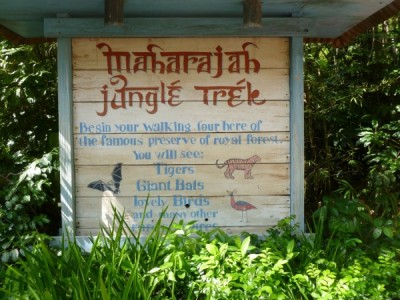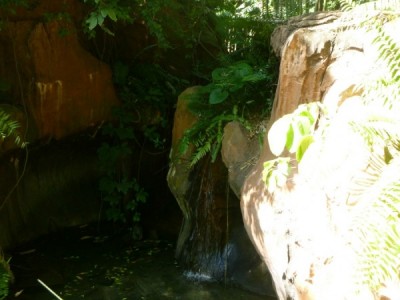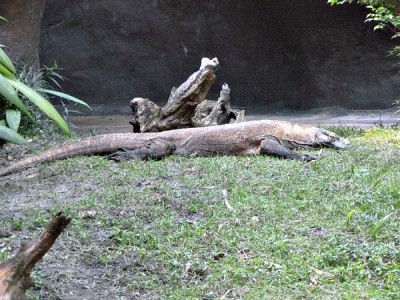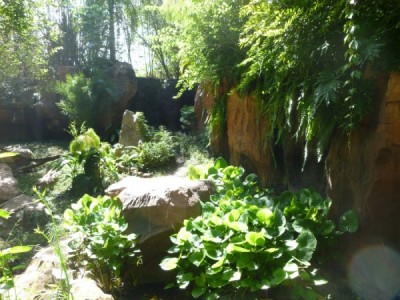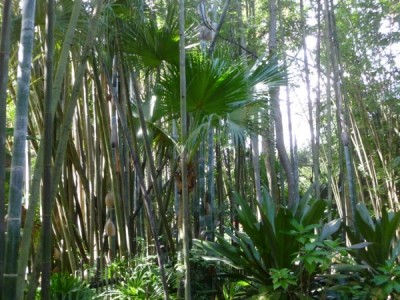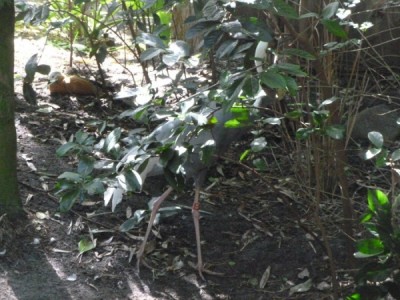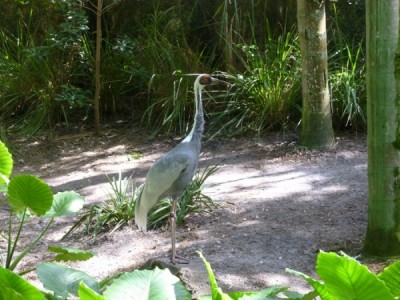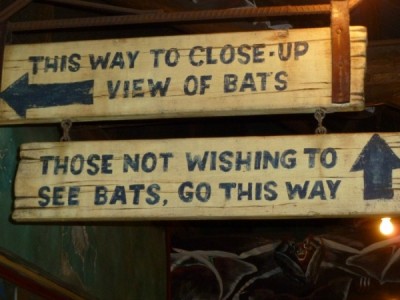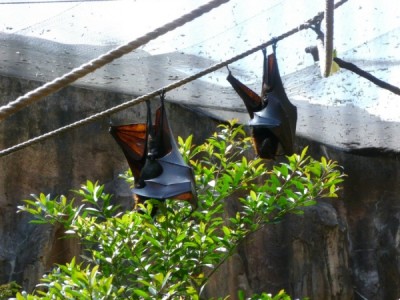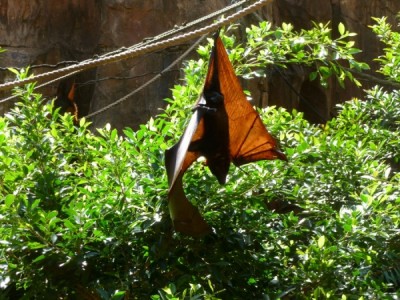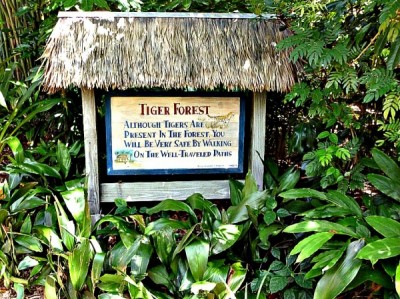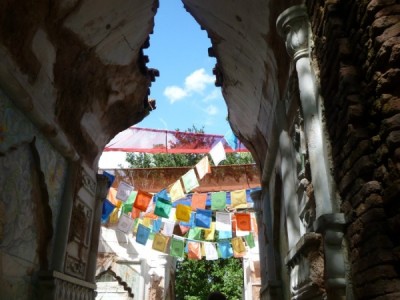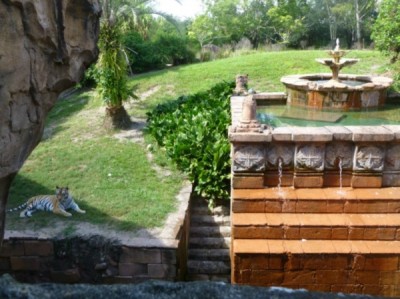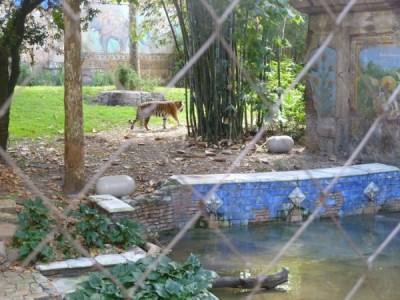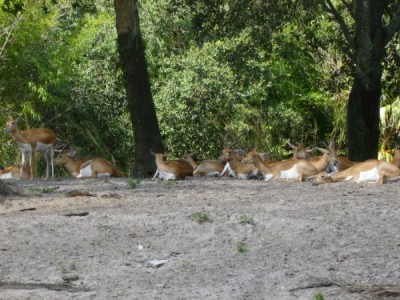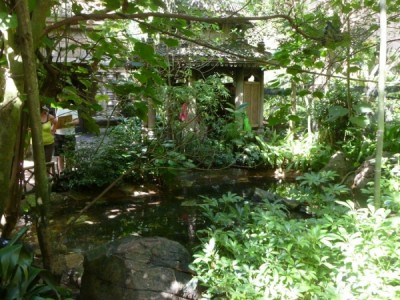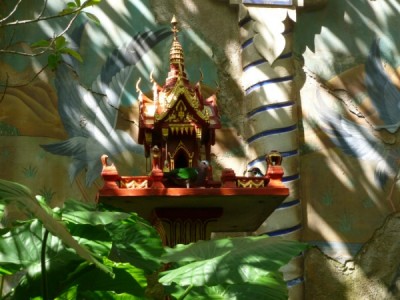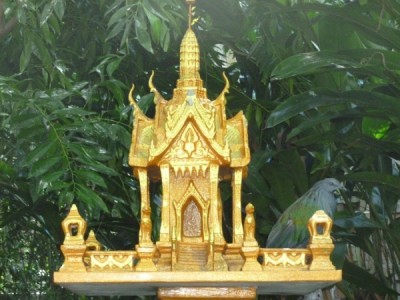In my last post, we took a deeper look at Pangani Exploration Trail in Animal Kingdom. Today we’ll explore the sunny trails of Maharajah Jungle Trek. Maharajah Jungle Trek is a 1/3 mile long, self guided tour in the Asia section of Animal Kingdom. The path features foot bridges, waterfalls, a bird aviary and houses many threatened and endangered animals. The Jungle Trek is heavily themed with an elaborate back story.
Disney invites you to “venture into the mystical Anandapur Royal Forest, a tropical paradise of trees, ruins, and wild animals. Legend has it the area was at one time a hunting ground of wealthy maharajahs; today it exists as a preserve that you can explore.” Some of the animals you may come across include: Asian tiger, Gibbons, Elds deer, Blackbuck, Rodrigues fruit bat, Malayan flying fox, Banteng, and over 50 species of birds.
Before you even embark on the trail, you will encounter the Gibbons and Siamangs near the Maharajah Jungle Trek entrance.
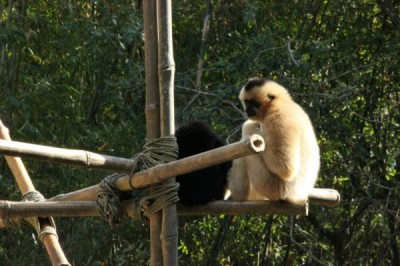
Gibbons are a member of the ape family. If you watch long enough, you will notice their acrobatic skills. The siamangs are the loudest land mammal. Their vocal sacs can inflate to the size of their head and be heard up to 2 miles away.
Entering the trail, the first animal you encounter will be the Komodo Dragon which is the largest living species of lizard.
Researchers believe these dragons produce a toxic venom that causes its prey to go into shock.
Next is the area that houses the Malayan tapir, the largest of all tapir and native to the rainforests of Southeast Asia.
Despite the fact that tapirs have poor vision, they are most active at night. The tapirs were not present on my visit, so I’m not sure if they are still part of the trail.
Meandering on…
Always be on the look out as some animals blend in very well like these birds.
The Sarus crane is the world’s tallest flying bird, has a wingspan of 8-9 feet, and can live to be 80 years old.
Next you will have to make an important decision.
Even the Maharajah Jungle Trek has a chicken exit! Should you be brave enough to enter, you will meet the Rodrigues fruit bat and Malayan flying fox.
The Rodrigues fruit bat is golden in color and drinks the juice and nectar from fruit and spits out the pulp. The Malayan flying fox is among the largest of bats with a wingspan of 6 feet. Unlike most bats, they use vision instead of echolocation when flying.
As you disembark from the bat cave, the theming becomes more detailed for the stars of the trail, the Asian tiger.
There are several viewing opportunities in the Tiger Forest that afford good vantage points to observe these amazing animals.
These strong swimmers are a little more active in the morning. Sadly, humans are their only predator.
Making your way over the bridge, on the left you will notice the Blackbuck and Elds Deer.
The Blackbuck have corkscrew twisted horns and are one of the fastest antelopes in the world clocking in at 50mph. Elds deer are very social animals with extremely powerful legs.
Make sure you grab an identification chart on your way into the bird sanctuary.
See how many birds you can spot like the Masked Plovers, Indian Pygmy Geese, Arges Pheasant, and King Parrots. Notice all the ornate bird houses.
The Maharajah Jungle Trek is another attraction that should not be rushed through and should take about 20 minutes at a leisurely pace. You can experience this at any time; however the animals are a little less active in the heat of the day. Maharajah is so beautiful and elaborately themed, you almost don’t need animals to make it an attraction. I hope you enjoy Maharajah Jungle Trek on your next trip to Animal Kingdom and leave with some animal knowledge, new memories, and hopefully a picture or two to remember them by.
Incoming search terms:
- https://www themouseforless com/blog_world/deeper-look-maharajah-jungle-trek-animal-kingdom/#:~:text=Maharajah Jungle Trek is a many threatened and endangered animals
- https://www themouseforless com/blog_world/deeper-look-maharajah-jungle-trek-animal-kingdom/#:~:text=See how many birds you minutes at a leisurely pace
- https://www themouseforless com/blog_world/deeper-look-maharajah-jungle-trek-animal-kingdom/#:~:text=Today well explore the Asia section of Animal Kingdom

